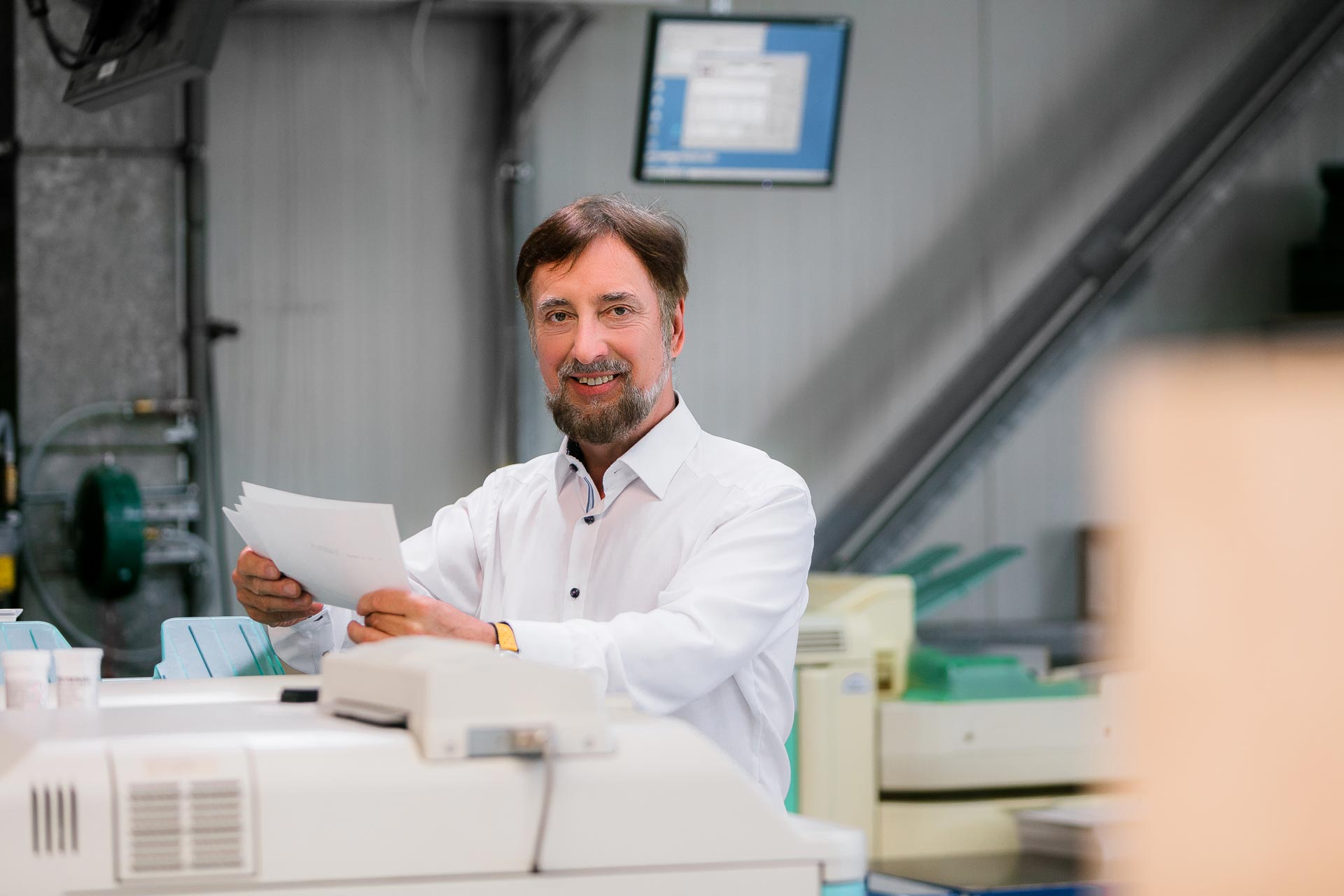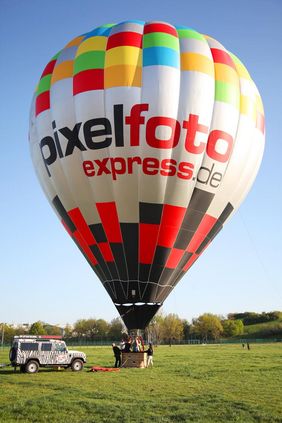Peter Schubert
Hero of the lab

Every professional print lab has its own hero, this hero ensures the highest possible quality to be delivered to the customer. They are photo enthusiasts and experts in their field. In our opinion these heroes deserve a spotlight, therefore we will ask every month one Hero to tell his or her story.
This time we have interviewed Peter Schubert, CEO of PixelFotoExpress. Peter Schubert is well respected within the German photo industry with years of experience, as a professional photographer and a true photo enthusiast. Starting as a professional photographer with a dream, he is now CEO and a true Original, who puts a lot of heart into constantly providing the best print quality over and over again; via his photo lab in Dresden.
Who is PixelfotoExpress?
PixelfotoExpress is a specialist laboratory founded in Dresden in 2005, which supplies to professional photographers and end customers throughout Europe, each of whom have a high quality standard. The philosophy of the company has always been to orient itself, through direct customer contact, to the constantly changing needs of the business partners. And to show them that, as far as possible, there are no limits in terms of service and the product portfolio. For example, in addition to classic photo products, various murals are also produced on site; some of which are subject to a complex production process. The young team wants to be positioned as far as possible away from the photo mass market with its work, and therefore relies entirely on the individuality of its customers. Which is why they have a selection of all available Fujifilm paper surfaces at PixelfotoExpress. The company is one of the first photo labs in Europe to include new papers in its already extensive range. When the new Pearl paper appeared in 2007, it was exactly this strategy that led to a huge increase in prominence. Which means that PixelfotoExpress stays true to its values in this regard. As well as the promise of a fast delivery of high quality photo products. After all, delivery in an already fast-paced time is a matter of urgency, and this is reflected in the name of the company.
Who is Peter Schubert?
I am the CEO of FotoCo + GmbH and since 1989 a professional photographer. On one hand, the PixelfotoExpress brand has a particular focus on the strategic direction of the company, but on the other hand, the interests of my employees are also significant to me. For me, good contact with the team is crucial for the successful implementation of economic goals. Only if we all stand together behind our corporate philosophy, we can deliver good products. In addition to my job as CEO, photography has always been my main occupation. This helps me to understand the needs of our customers and make ground-breaking decisions for the company.
Could you tell us about your professional background?
Shortly after my training as a photographer and professional photographer I realized that I wanted to be self-employed. At first, in 1988, I took over a small photo shop in the city center. Back then, I wanted to offer my customers more than just a portrait and passport photo service. Thanks to the reunification and new technical possibilities, the range of services offered by FOTO Schubert from Dresden gradually expanded. In addition to the portrait, advertising and industrial photography, in which I was also active for large corporations, I was able to pursue a long-desired dream from this point on and establish myself in the field of aerial photography. This was followed by the pilot’s license for UL and the helicopter and balloon’s driver’s license. As the only photo lab in the world, we now operate a hot air balloon that we not only use for advertising purposes, but also to open fantastic new perspectives for our customers, friends and business partners on a journey across the famous Elbe metropolis.
What has inspired you to enter into the photographic printing business?
In my work as a photographer, I have always had problems with finding photo labs that could convince me of good quality and fast delivery times. With the emergence of the first digital SLR cameras at the beginning of the 2000s, the large-scale laboratories, which are fully specialized in analogue photography, often could not keep up with the new age. Generally they completely failed the necessary transformation process. In the transition to the digital age of photography they just could not react fast enough to the developments. But because I had a very good order situation myself, I urgently needed a way to quickly and reliably develop photos. With the advent of minilabs, I suddenly had the opportunity to simply develop my own images. The increasing ease of use and good results opened the door to the digital age, at least for me. It quickly became clear that Fujifilm is technically in the lead, so I soon started processing pictures with the first LP-570. Incidentally, this very first machine is still in use now every day, even after several million prints later. For me, it is also a confirmation that the investments made 15 years ago have paid off completely. After confirming the technology being solid and the quality of the photos meeting the requirements far more than initially expected, the next step was consequently the founding of a separate laboratory.
What is it that you are most passionate about?
The challenge is to constantly provide the best picture quality again and again. If you want to achieve a good result, you have to put a lot of heart into it. That is exactly what I fortunately have never lost, because photos have a very personal value for me today. Data in a cloud can be lost without being able to do anything about it. Who didn’t already lose digital data? Pictures that you can hold in your hand are truly something that are lasting.
How do you think digitalization has influenced the photographic printing business?
Almost all people today take a lot of pictures, not only in the Western world. Nowadays, most pictures are taken with a smartphone. Often, of course, it’s just snapshots or selfies. But digitalization has made it possible for many people to take photos at a very high level. There are so many pictures, today more than ever before. Almost everyone with a camera has probably already tried to take artistic pictures. Maybe more or less unconsciously. But art is very diverse. There are also amateur photographers who take spectacular landscape shots. At any rate, impressive pictures are often taken by people who are not originally trained as photographers. There are many talents that not even every professional can hold a candle to. Of course, this is a great opportunity for us as a photo lab. Many enthusiasts order very professionally designed photo calendars or murals of their favourite subjects. They give away their photos to family, friends and acquaintances. Sometimes they even have exhibitions or sell the works on a small scale. For the photographers this means a new kind of competition, and they have to think about how they want to convince others to further their career as professionals. Unfortunately, many try to sell their work below value, which may cause frustration for one or the other. Others may lose their motivation and only work in a limited way. In my view, it is important to discover the love of photography again. Quality through dedication is the key and quality has its price. If this awareness exists with the photographer, then he or she can communicate this better to customers and be successful despite new challenges.
What do you like most about Fujifilm original photo papers?
Since the existence of PixelfotoExpress we have experienced a consistently high quality of Fujifilm papers. No fluctuations in quality have annoyed us so far. Poor quality could significantly damage the reputation of the brand. That’s why we are very happy that we always have positive experiences with Fujifilm papers. We also find it great that the product range is constantly evolving and that there are so many ways to put the picture in the limelight with photo paper. This begins with the finishing as a mural, for example, with lamination of the real photo behind acrylic, and does not end with the latest trends. Some even represent a renaissance of earlier times, such as the very popular retro print.
Do you have a favourite Fujifilm original photo paper?
Pearl is still my favourite photo paper since it hit the market in 2007. It lets the colours shine with a metallic shimmer. This impresses many observers. But the new Velvet photo paper is also an increasingly popular product. Not only with our customers, but also with me. It is completely different from other papers and allows you to be creative and to try new ideas. It has a very matte surface that reproduces the tonal values in an unusual way that is difficult to describe. Whatever your experience as a photo artist is, Velvet photo paper should be tried at least once.
How do you see the future of the professional printing business?
Photos have not lost its importance, even if that was exactly what was already foreseen by many. There have been some major changes in the market in recent years and there is still a lot of movement there. The new technologies, the internet and digitization have completely reshuffled the cards. At the beginning of this change, there was a big boom in the sale of digital SLR cameras. This has been declining for some time. People do not buy every new model anymore. Nevertheless, they continue to take more pictures, not less. Just the methods have changed a little. In the future it will be important to be able to react to new challenges. We have already developed concepts for this and are already starting to implement them. At this point, I cannot say too much about this… However, it should be said that photographers face challenges and so many professionals must probably do their homework here. At any rate, focusing on quality is the right path. Both for the photographer, as well as for us.
What advice would you give to upcoming photographers?
There are many photographers who put a lot of time into the processing of their pictures and are therefore often very successful. Even many young photographers are taking the planning of a shoot seriously. That’s great. On the other hand, there are also photographers who still work in the style of the 80s and 90s. Unfortunately most only have rudimentary basic knowledge of colour management. Some prefer to edit pictures on their laptop in the garden rather than on a regular monitor under standard lighting conditions. You are only successful if you always keep your heart in the matter and try to make a job professional. Even if the times are a bit more difficult now and then. Especially then it is important to motivate yourself again, to educate yourself, to learn new things; at least not to sit back. Customers feel very clearly whether someone is passionate about their job or not. If the photographer stops doing things at some point, it usually does not take long for sales to drop. Therefore, I recommend for you to never lose heart and to constantly work on yourself.
Links and handles:
https://www.pixelfoto-express.de/
Instagram: https://www.instagram.com/pixelfotoexpress/
Facebook: https://www.facebook.com/PixelfotoExpress
Youtube: https://www.youtube.com/pixelfotoexpress



